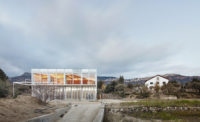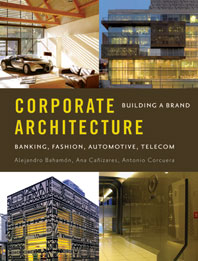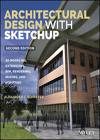San Francisco
The cloud has an image problem. The term'which refers to the distributed networks of servers that store data and power all kinds of Internet services'gets tossed around a lot, but it doesn't evoke much beyond a vague nimbus of Amazon orders and MP3 files. So when James Lindenbaum, CEO of a communal workspace for cloud developers called Heavybit Industries, decided to set up shop in San Francisco's tech corridor, he needed an office that would convey the engineering muscle behind his members' software. 'We wanted a building that had a really heavy and serious look from the outside,' says Lindenbaum, who compares developing for the cloud to building the roads and laying the pipes that allow individual companies to operate. 'I didn't want this to feel theoretical when we go out and tell the world about it. There's a place where people do this thing. It's real.'
Heavybit operates like a residency program for nascent software-development companies, each of which spends nine months under the program's wing. Lindenbaum wanted an office that would encourage these young businesses to share ideas as they build their products, refine best practices, and pick up tips from Heavybit's speaker series. In early 2012 he enlisted Lisa Iwamoto and Craig Scott, principals of the San Francisco'based practice IwamotoScott Architecture, to renovate a converted warehouse he had leased in the city's South of Market district. That May the duo, who often introduce digital fabrication and design-build elements into their projects, set about transforming the three-level concrete-frame structure into a workshop for building the intangible infrastructure of the cloud.
The warehouse's owner, with San Francisco-based Theodore Brown & Partners, had already restored the shell, sandblasted the structure's Douglas-fir ceiling joists, and replaced the storefront windows on the main level. 'It was just a big open space, totally disconnected from the upper floors,' says Iwamoto. The architects divided the ground floor into a common room with flexible seating, a gunmetal-hued kitchen, and a conference room and bike-storage area defined by a reclaimed-wood wall. To open up and visually connect the first two levels, the team removed a central portion of the second floor and suspended a steel staircase in the gap. Viewed head on, the risers look sturdy and substantial, but in profile they almost disappear. 'It wanted to be as thin as possible,' says Scott, 'so that it could appear to be floating but still feel heavy at the same time.'
Throughout the project, it is this careful balance of solidity and transparency that keeps Heavybit from getting bogged down by its own hefty image. To carve up the ground floor and still preserve sightlines, the designers built an angular seating platform out of stacked laminated-plywood sheets. The feature's shape and height vary to serve different functions: it is a stair landing, a podium for speakers, a reception desk, a standing 'idea bar,' and bench seating in one continuous form. The architects countered its smooth, folding surfaces by leaving the lap joints raw and unfinished on the ends. 'This is a laminated platform, but it also feels like a hewn thing because of the edge grain at the sides,' says Iwamoto.
While IwamotoScott focused Heavybit's limited budget on the ground level, the firm's refined treatment of rugged materials carries over to the office spaces as well. The architects removed walls on the upper floors to make way for open-plan workstations and conference rooms, with sliding polycarbonate doors to let light through. And on the third level, they fashioned a breakout space with curtainlike walls of industrial rope and electrical conduit suspended from the ceiling. Like the stair, the rope room reads as heavy, but the gaps between the strands keep it from becoming a solid mass. 'The materials are so rough,' says Iwamoto. 'And yet the details tame them, but not enough for you to lose the visceral response.'
Iwamoto and Scott's buoyant treatment of weighty surfaces turns Heavybit's shop-class approach to programming into a tactile experience. And, though the cloud itself remains intangible, its software developers are now a lot more visible.
Lamar Anderson is a frequent contributor to record who is based in San Francisco.
 |
| Photo © Dean Kaufman |
A conversation with: Lisa Iwamoto
As collaborations go, Lisa Iwamoto and Craig Scott aren't so much egalitarian as exceedingly practical. The duo, who run a five-person firm in San Francisco, have a small enough practice that they can both devote themselves to every project. 'It's so fluid,' says Iwamoto. 'We're each doing 100 percent rather than half.' Some regular clients tend to talk to one partner or the other depending on whom they met with initially, she adds. 'It's almost a matter of circumstance.'
If anything, Iwamoto says, she sometimes gets more than her share of credit. On every project she and Scott list their names alphabetically, so her name always comes first'as it does in their firm name, IwamotoScott. 'If it were the other way around, it would sound like one Japanese man, Scott Iwamoto,' she says. And while no one underestimates her design role, Iwamoto has noticed that clients usually ask her the questions about interior finishes and furniture. 'I think it's just a default reaction,' she says. 'Clients tend to look to me, but Craig is the one who knows every product in the world.'
Architect (Interior Renovation):
IwamotoScott Architecture
729 Tennessee Street
San Francisco, CA 94107
415-643-7773
Size: 16,000 square feet
Cost: withheld
Completion date: December 2012
PeopleOwner: Heavybit Industries Architect (Interior Renovation): Architect (Exterior Renovation): Personnel in architect's firm who should receive special credit: Design Team: Sean Canty, Chretian Macutay, Ryan Beliakoff, Kelvin Huang, Julianna Raimondi Engineer(s): TSA Structural Engineers Inc. Consultant(s): General contractor: Matarozzi Pelsinger Builders, San Francisco, CA Photographer(s): Bruce Damonte Photography, 415.845.6919 CAD system, project management, or other software used: Rhinoceros, Grasshopper, AutoCAD |
ProductsDoors Hardware Interior finishes Walls: Polygal Furnishings: Refrigerators: Frigidaire Commercial Lighting Add any additional building components or special equipment that made a significant contribution to this project: Y-tables, Work Tables, South Window graphics, by Heavybit West Window graphics by IwamotoScott Architecture |
















